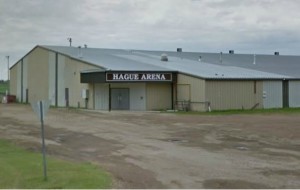We’ve had this conversation before, when a NHL player or coach comes out and complains about the size of goalie equipment. We’ve been at this for close to 15/16 years since the days of Patrick Roy wearing a poncho for a jersey during his time in Colorado. Goalie equipment has been more regulated and decreased in size since then, but according to Detroit Red Wings coach Mike Babcock more needs to be done .

When talking to ESPN’s Craig Custance recently. Babcock thinks it might be the time to shrink goalie equipment again to increase scoring in the league. “My general manager used to be a goalie, have you seen the size of him?” Babcock said of Ken Holland, General Manager for the Red Wings. Holland played goalie for the franchise close to 30 years ago and checked in at 5-foot-8, 160 pounds. In the age of 2013, bigger goalies are much more desired by coaches. When I was playing competitive hockey 10+ years ago I was around 5-foot-10, 150 pounds and I was undersized compared to the goalies I had to compete with who had 30 or more pounds on me. It’s sad to say but if Holland were to try to play junior hockey as a 16-year-old at that size he would have a hard time cracking an WHL or OHL roster. I believe the last of the undersized/smaller goalies was Chris Osgood who retired two years ago. His playing size was 5-foot-1o, 175 pounds. Times have changed.
Another thing that has changed is the size of defensemen. It’s no longer simply putting the overweight kid or your weakest skaters on the blue line. Now, defensemen have to be bigger, faster, stronger, and have the ability to shot block and deliver posession-changing checks.
Since we are on the size issue, let’s compare the sizes of notable goalies in the NHL. Detroit’s Jimmy Howard is 6-foot-0, 210 pounds. His teammate Jonas Gustavsson is 6-foot-3. Some of the biggest goalies in the league include Ottawa’s goalie, Ben Bishop, who is the tallest in the league at 6-foot-7 and he’s not much bigger than guys like Anders Lindback (6-foot-6) and Devan Dubnyk (6-foot-5). As a 6-foot-1 goalie myself, I feel that goalie equipment is just recently reaching a stage where safety is on par to the amount of shots and injuries we can suffer. I still wake up the next morning with soreness from shots taken the previous night. I don’t face the intensity of shots an NHL goalie faces but I don’t come home pain-free either. I believe the size of the equipment is fine where it is at in relation to the speed of shots we subject ourselves to.
Another solution Babcock brought up is bigger nets. This isn’t the first time someone has brought that up either. That would greatly change the dynamic of the game because everything a goalie has learned his entire life regarding positioning, angles, and shot blocking would have to be relearned. It’s like when you watch your children play a cross-ice game and the goalies doesn’t have a crease underneath him for reference as he won’t know where he’s positioned in regards to the net.
We also forgot to mention that when Holland was playing, players were shooting at him with straighter curves and wooden sticks. Today we have players like Zdeno Chara shooting rockets off a composite stick at the net. There are two things we will never see in the NHL: players giving up their lightweight composite sticks and arenas retrofitting themselves to the wider Olympic-sized surface.


